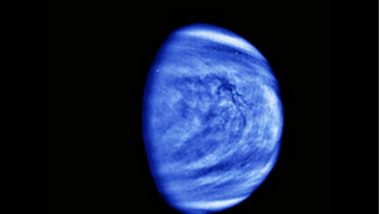Washington, September 14: After Mars, scientists are now trying to discover life on Venus. On Monday, scientists detected traces of phosphine gas in the acidic clouds of Venus. The discovery indicates that life in inhospitable planet of the Solar system. However, an actual form of life is not discovered on Venus. Notably, on Earth, the gas is produced by microbes in Oxygen starved environment. Phosphine gas destroys life forms dependent on Oxygen for survival. Are Male Genes From Mars, Female Genes From Venus? New Study Sheds Light on Sex Differences in Gene Expression.
Scientists believe that with this discovery, evidence of life could be possible on Venus. The international scientific team first spotted the phosphine using the James Clerk Maxwell Telescope in Hawaii, reported Reuters. The confirmation was made using the Atacama Large Millimeter/submillimeter Array (ALMA) radio telescope in Chile. NASA Finds Evidence of Life on Mars, Know Everything About The Big Discovery by Curiosity Rover.
According to the report, 20 parts-per-billion traces of the gas was spotted in the Venusian atmosphere. Astronomer Jane Greaves of Cardiff University in Wales to the global news agency that researchers also examined potential non-biological sources such as volcanism, meteorites, lightning and various types of chemical reactions on the surface of the Venus, but nothing concrete was found.
What is Phosphine Gas?
Phosphine is a colourless, flammable and toxic gas. Pure phosphine is odourless. However, technical grade samples have a highly unpleasant odour like garlic or rotting fish. The odour is due to the presence of substituted phosphine and diphosphane (P2H4). Phosphine is the compound with the chemical formula PH3. Its IUPAC name is Phosphane. Jupiter, Venus and Other 3 Planets Can Be Seen With Naked Eyes in the Coming Week, Says Scientist.
Venus is the closest planet to Earth. Temperatures at the surface of Venus can reach 880 degrees Fahrenheit, which is equivalent to 471 degree Celsius. It is the second planet from the Sun, while Earth is the third. According to scientists, aerial microbes could survive in Venusian high clouds with mild temperatures around 30 degree Celsius.
(The above story first appeared on LatestLY on Sep 14, 2020 09:45 PM IST. For more news and updates on politics, world, sports, entertainment and lifestyle, log on to our website latestly.com).













 Quickly
Quickly


